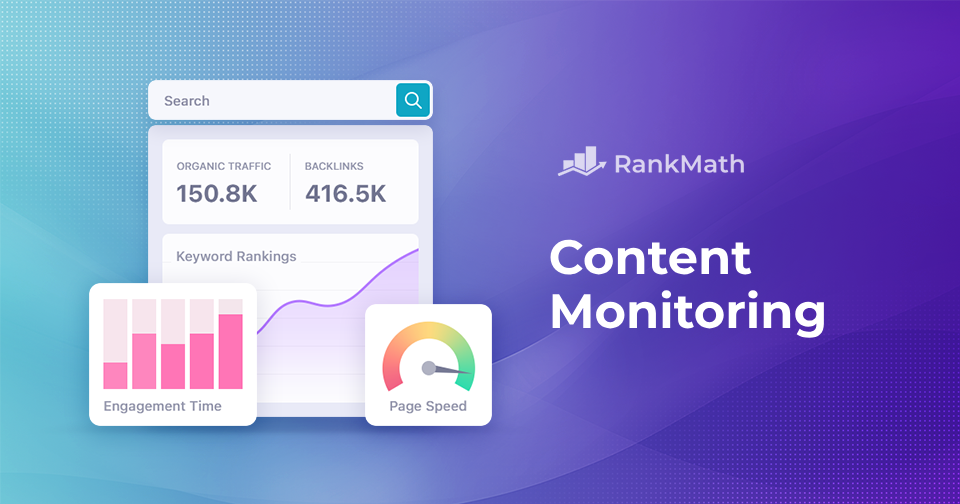The internet never sleeps. Every second, millions of posts, reviews, and conversations are taking place, and if you’re not paying attention, you can miss something that matters to your brand.
That’s why I believe content monitoring isn’t just helpful; it’s essential.
By tracking and analyzing what’s being said online, you can uncover valuable insights, protect your reputation, and connect with your audience in real time. Think about this: 85% of consumers trust online reviews as much as personal recommendations. That means a single comment or review can shape how the audience sees you.
In this post, I’ll walk you through exactly how to keep your finger on the pulse of your online presence, with practical tips to help you stay ahead of the curve and in control of your brand’s story.
So, without any further ado, let’s get started.
Table Of Contents
1 What is Content Monitoring?
Content monitoring is all about keeping an eye on what’s being said online, about you, your brand, or even your industry, and using that information to your advantage.
You’re tracking and analyzing conversations, reviews, news articles, social media posts, blogs, forums, and even competitor updates so you can respond quickly, spot trends, and make smarter decisions.
Let’s say you run a restaurant. You’re checking Yelp and Google Reviews regularly. When someone leaves a nice review, you thank them. If there’s negative feedback, you address it right away before it snowballs. Over time, you notice recurring themes, maybe customers keep praising a new dessert or mentioning long wait times. That’s valuable insight you can use to improve your service and refine your marketing.
Content monitoring can even reveal patterns, like a spike in mentions during your new menu launch. That tells you your marketing is getting noticed, and gives you a chance to build on that momentum.
2 Why is Content Monitoring Important?
Now that you know what content monitoring is, let’s talk about why it matters for your brand’s success.
2.1 Identify Content Gaps
When you monitor content, you’re not just looking at what’s already out there; you’re spotting what’s missing.
By tracking conversations, questions, and feedback across social media, forums, and review sites, you can see exactly where your audience’s needs aren’t being met.
Tools like Google Search Console make this process even easier. In the Performance report, you’ll find search queries that lead people to your site. Look for queries with high impressions but low clicks; this is a sign your site is showing up in search results, but your content isn’t convincing enough for users to click.

For instance, imagine you run a tech company and notice on Reddit and Twitter that users keep asking about troubleshooting a specific product feature you haven’t documented well.
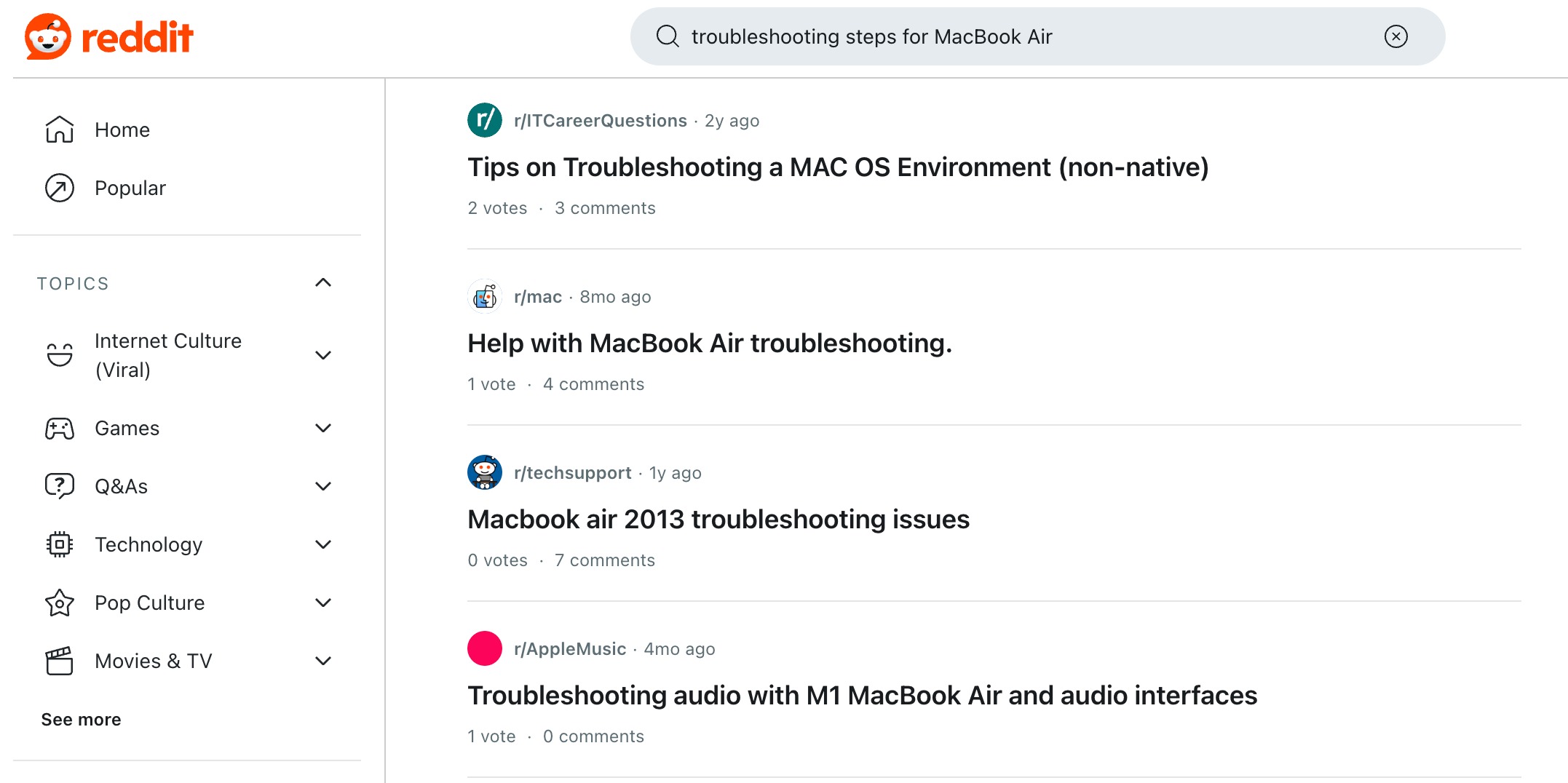
That’s your cue to create detailed guides, videos, or blog posts. By filling this gap, you’re not just helping your audience, you’re building trust and showing that you listen.
Refer to our dedicated tutorial on content gap analysis and fine-tune your content strategy to drive maximum results.
2.2 Find Optimization Opportunities
Content monitoring also helps you find ways to improve what you already have. By keeping an eye on your competitors’ content, you can benchmark your performance and see where you might be falling behind.
With Ahrefs’ Website Traffic Checker, you can see where their traffic is coming from, which keywords they rank for, and which strategies seem to be working best for them. Then, you can adapt those ideas, whether that means optimizing your existing articles, targeting new keywords, or exploring content partnerships.
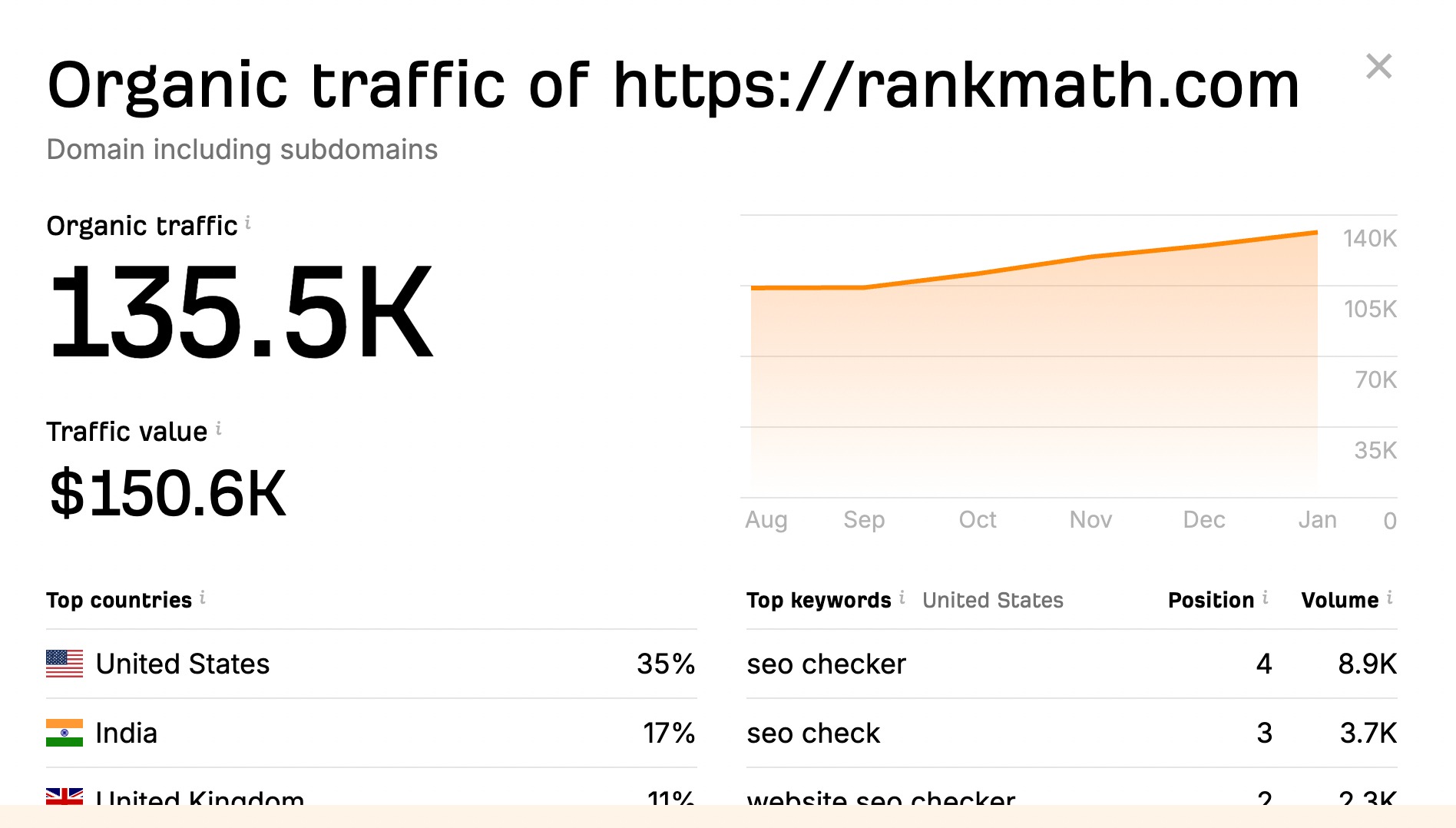
Small tweaks based on these insights can mean big wins for your visibility, engagement, and search rankings.
2.3 Market Insights and Trend Identification
Another powerful benefit of content monitoring is that it keeps you ahead of the curve. By watching online discussions and paying attention to recurring topics, you can spot new trends before your competitors do.
For example, you might notice a spike in conversations around eco-friendly products. Acting on that insight, like expanding your sustainable product line or highlighting green initiatives, helps you stay relevant and meet customer expectations.
In fast-moving markets, the brands that adapt quickly are the ones that lead. Content monitoring ensures you’re one of them.
3 Which Metrics Should You Monitor?
If you want to make content monitoring truly effective, you need to track the right numbers. Here are the key metrics I recommend you focus on, and how they help you improve your results.
| Metric | Why It Matters | Tool to Track |
| Organic Search Traffic | Shows how many visitors find you via unpaid search results, an indicator of visibility. | Google Search Console, Google Analytics |
| Organic CTR | Reveals how effectively your search snippets attract clicks. | Google Search Console |
| Keyword Rankings | Indicates your position in search results for target queries, impacting traffic potential. | Rank Math’s Rank Tracker, Ahrefs, Semrush |
| Page Load Speed | Affects user experience, SEO rankings, and conversion rates. | Google PageSpeed Insights |
| Social Engagement | Measures audience interaction, showing what content resonates most. | SharedCount, Native Social Media Analytics |
3.1 Organic Search Traffic
Organic search traffic is the number of visitors who find your website through unpaid search results. Tracking organic search traffic shows you how well your content is ranking in Google, Bing, or Yahoo, and whether it’s attracting the right audience.
When you see this number grow, it’s a clear sign your content is getting noticed. If it drops, it’s time to dig into what’s changed in your rankings or competition.
Here’s what the organic search results look like:
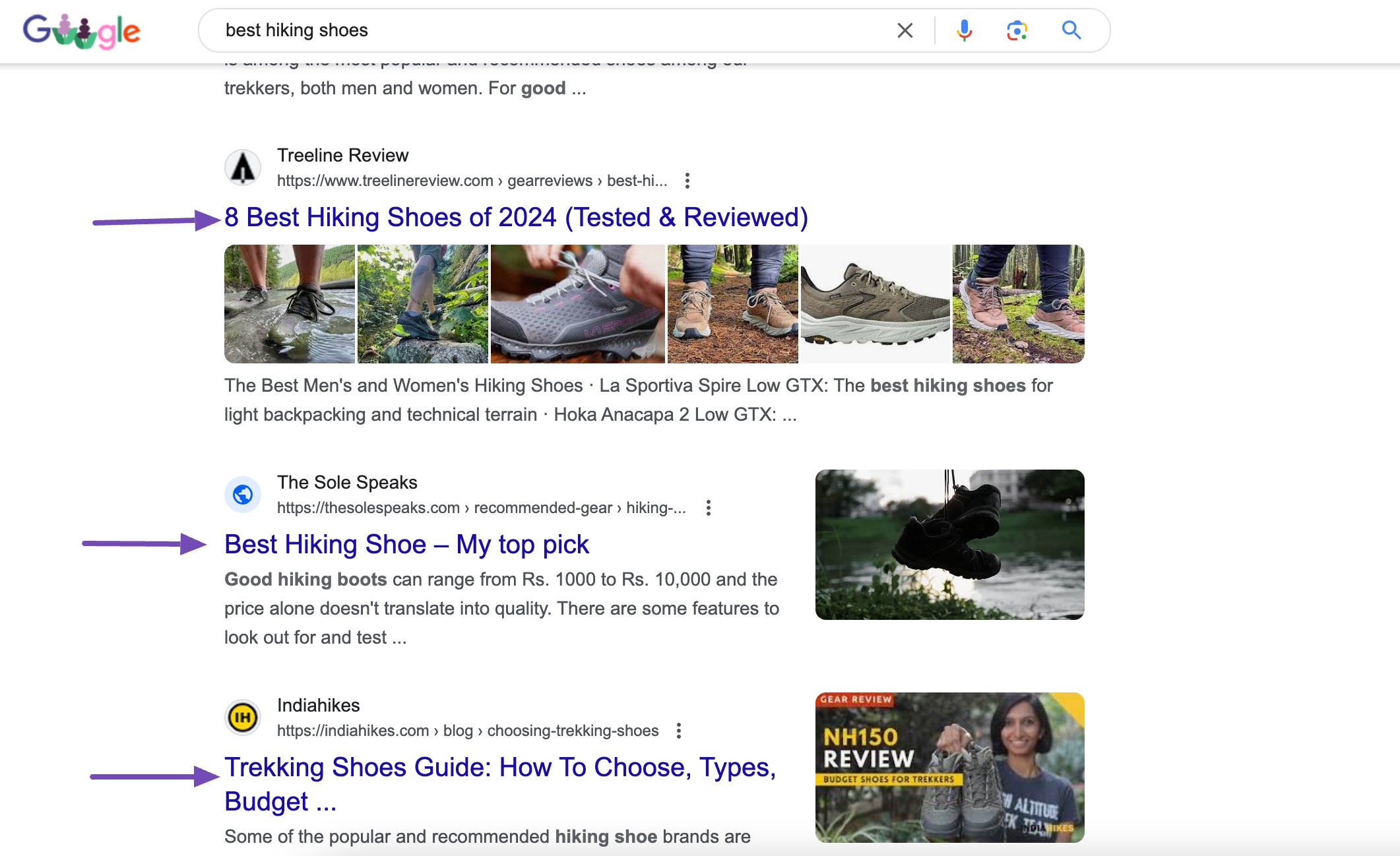
3.2 Organic Click-Through Rate
Getting your content to appear in search results is one thing; getting audiences to click is another. CTR measures the percentage of searchers who see your result and actually click through to your site.
In Google Search Console, check for pages or keywords with high impressions but low CTR. That’s your hint to make your titles and meta descriptions more compelling so more audience choose your link.
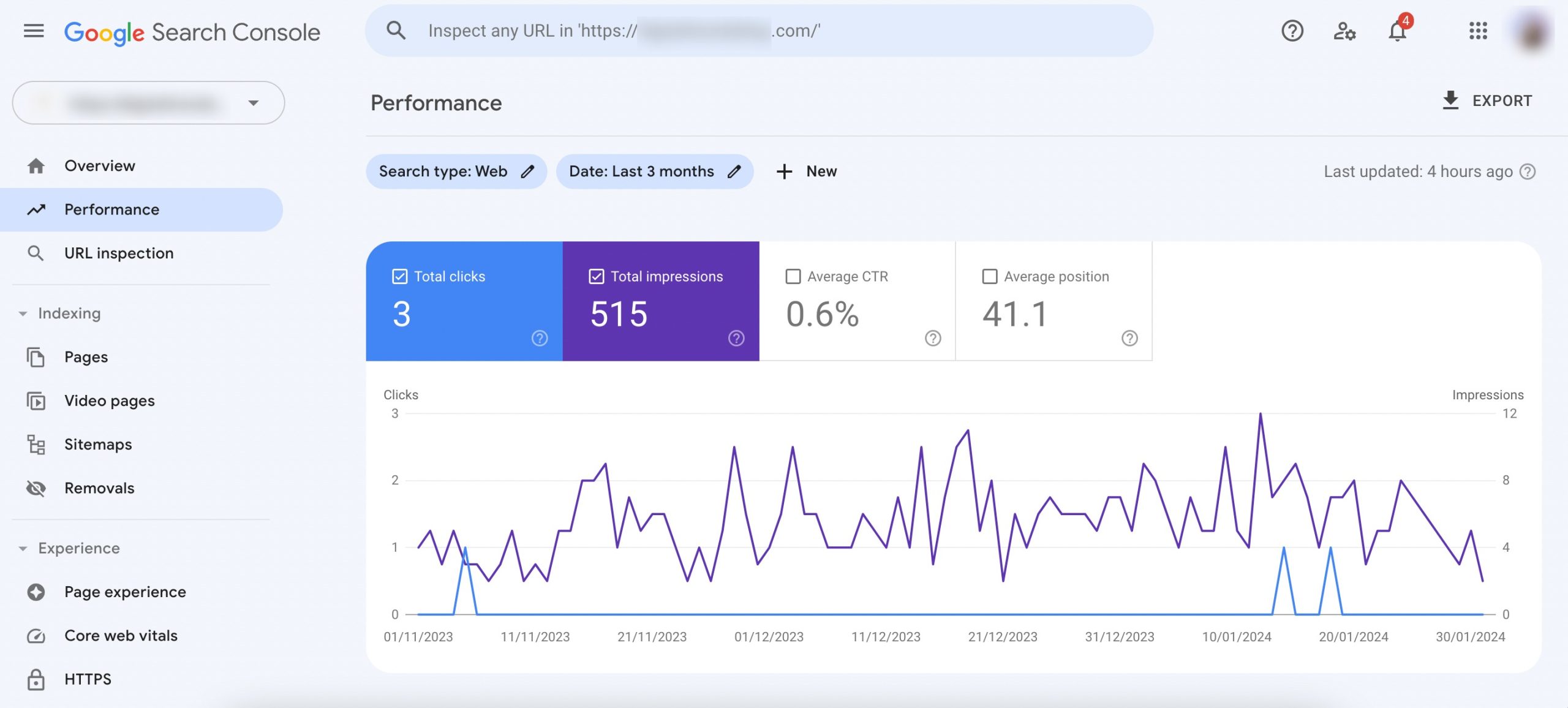
3.3 Keyword Rankings
Your keyword rankings show where your pages land in search results for specific queries. Higher rankings mean more visibility and more potential traffic.
Rank Math’s Rank Tracker feature helps in monitoring and tracking keyword rankings in SERPs. Simply input your keywords to begin tracking your website’s keyword rankings effectively.
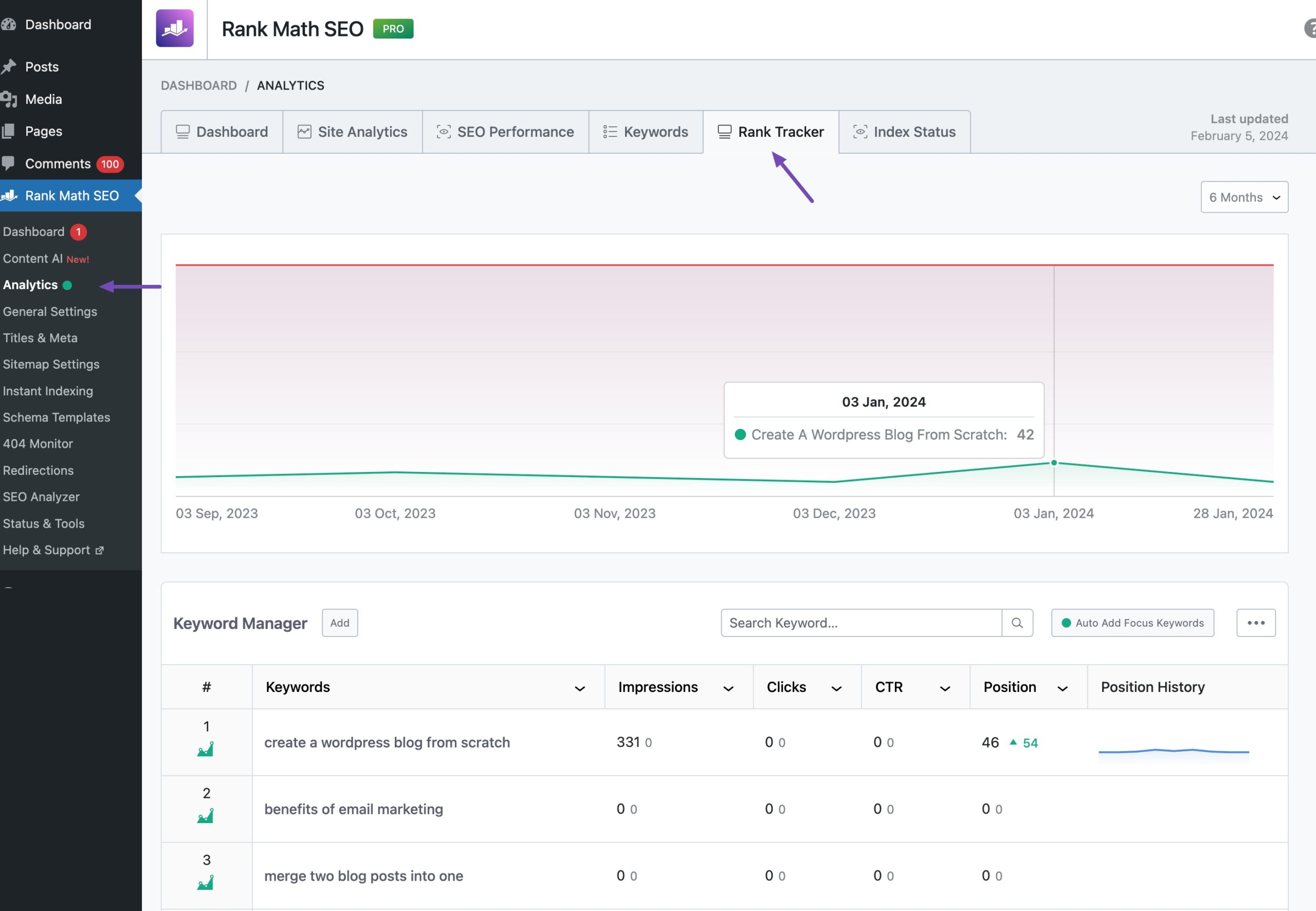
3.4 Page Load Speed
Slow websites lose visitors. Page load speed tells you how quickly your content appears for users, and it’s a big factor in both user experience and SEO.
Test your pages with Google’s PageSpeed Insights. If your scores are low, you can compress images, enable caching, or upgrade hosting to make your site load faster and keep visitors engaged.
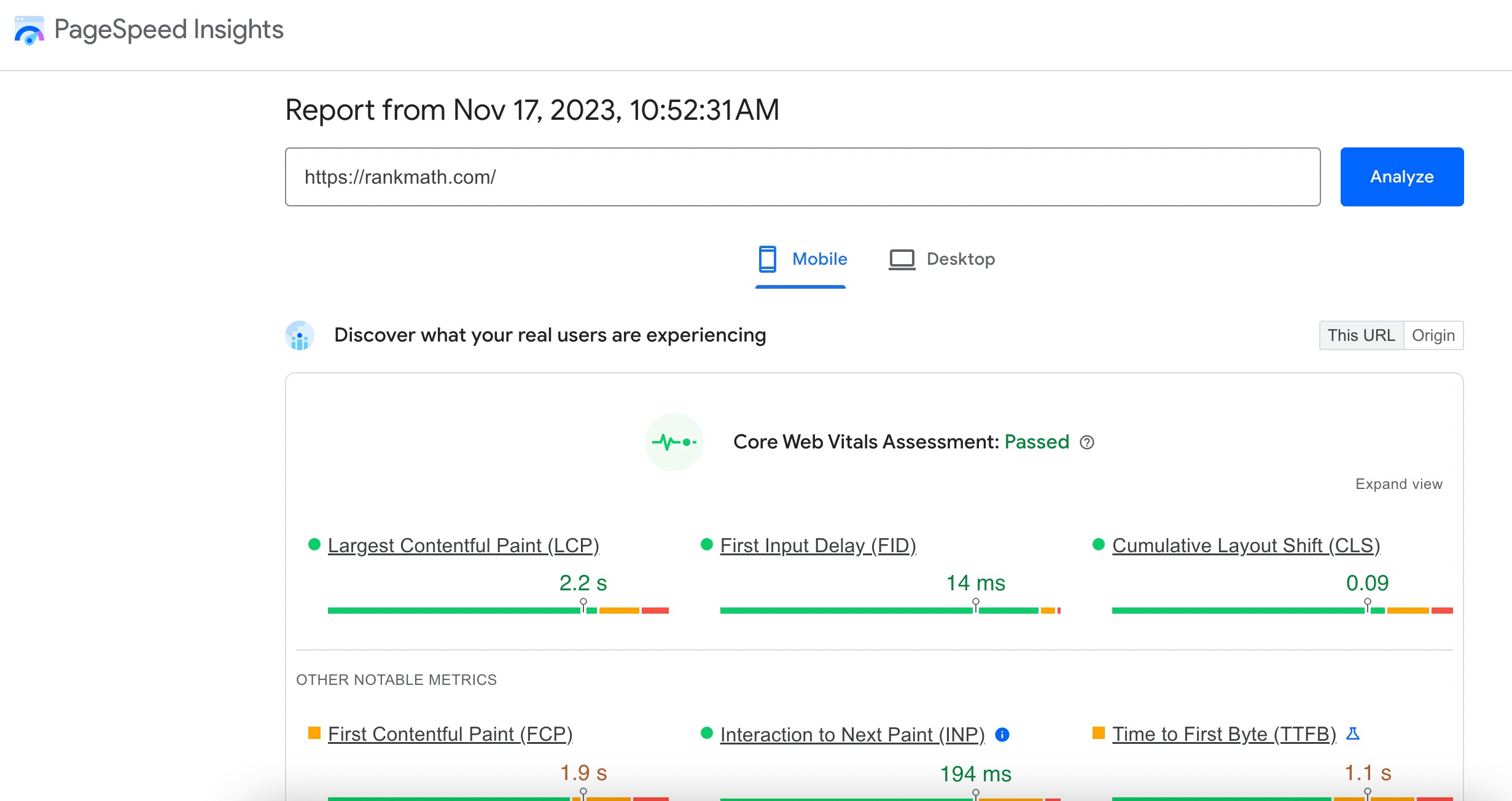
3.5 Social Engagement
Likes, shares, comments, and mentions tell you how much your audience is interacting with your content on social media. Higher engagement means your content is resonating and sparking conversation.
A free tool like SharedCount lets you see social shares for any URL. By tracking which posts get the most love, you can spot patterns in what your audience enjoys and create more of it.
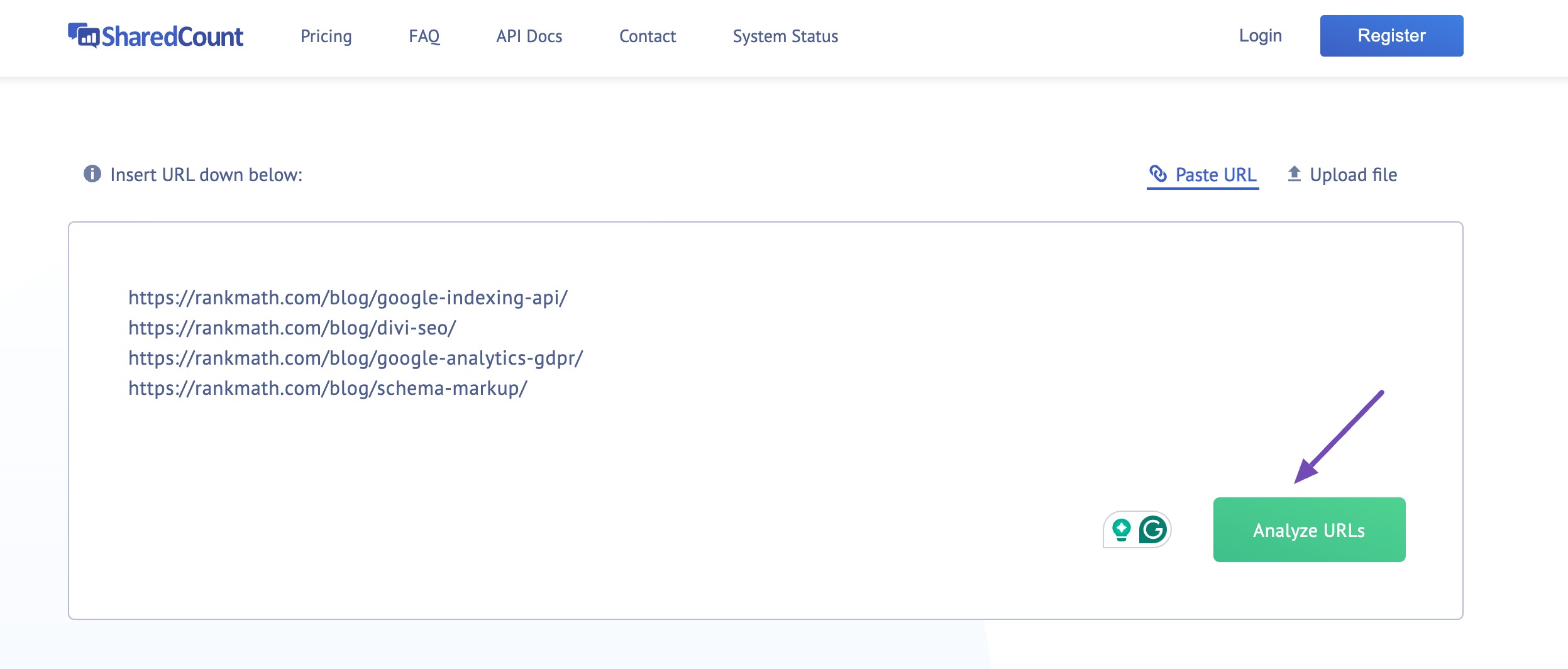
By doing so, you’ll get the social reactions these URLs have received, as shown below.
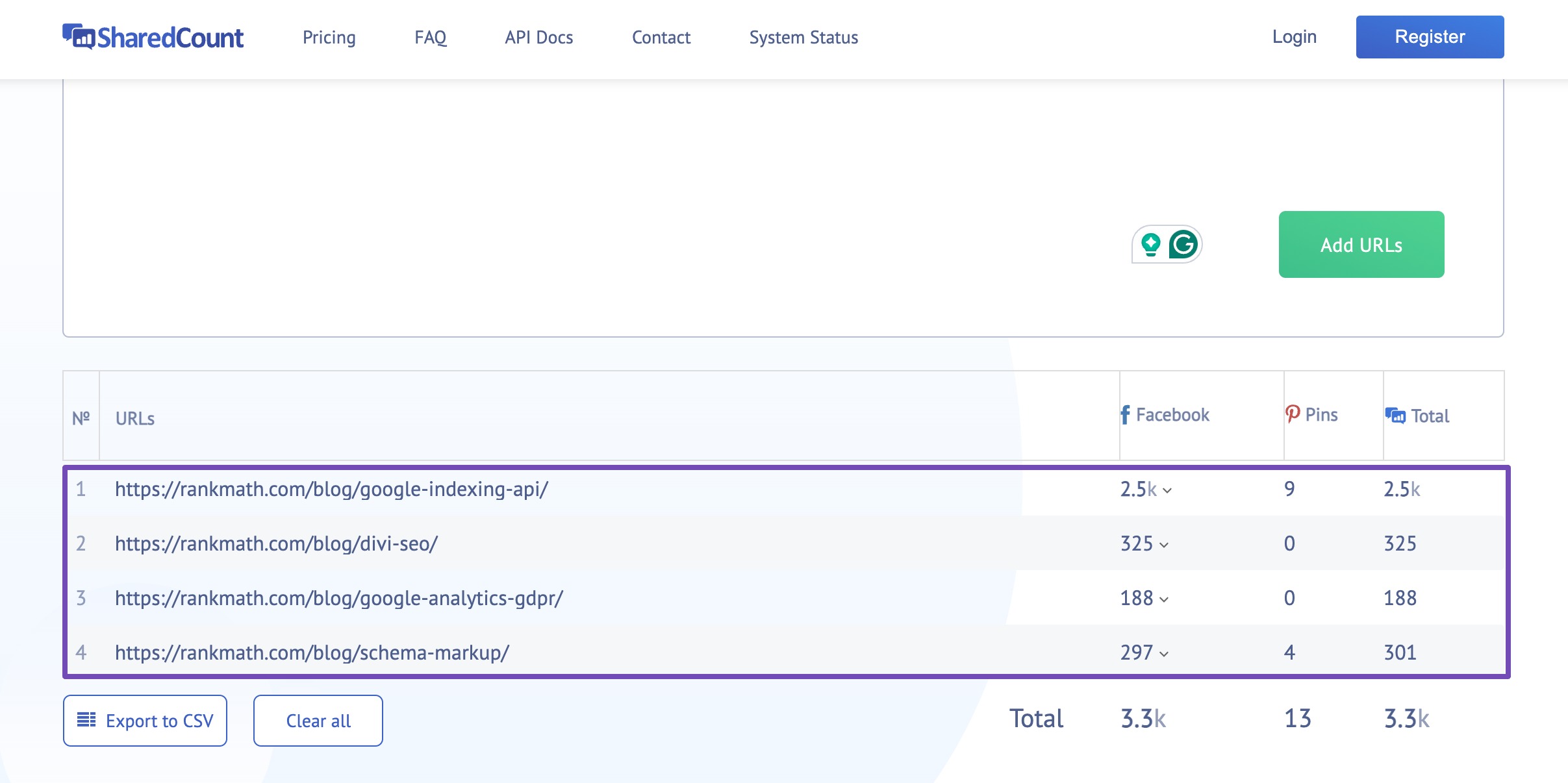
4 Best Practices for Content Monitoring
Let us now discuss how to monitor your content.
4.1 Set Clear Objectives
Before you start tracking every comment, click, and keyword, you need to know exactly what you’re aiming for. Clear objectives give you focus and ensure you’re collecting the right data, not just drowning in numbers.
Ask yourself: What do I want my content monitoring to achieve?
Maybe you want to boost your visibility in search results, deepen engagement with your audience, or protect your brand’s reputation online.
For example, if your goal is to improve SEO performance, you can track keyword rankings, spot content gaps, and study your competitors’ strategies. With these insights, you can refine your content plan so your website stays relevant, competitive, and visible to the audience you most want to reach.
4.2 Analyze Competing Content
If you want to stay ahead in your industry, you need to know what your competitors are doing and how you can do it better. Analyzing competing content shows you what’s working for others, where the gaps are, and how you can differentiate your own strategy.
Start by identifying your main competitors, the ones ranking for the same keywords and speaking to the same audience as you. Competitor analysis tools like Ahrefs and Semrush make this easy.
In Semrush’s Organic Research tool, enter your domain, select your target location, and click Search. You’ll get an Overview report. Check the Competitors tab to see who’s competing with you for organic search traffic.
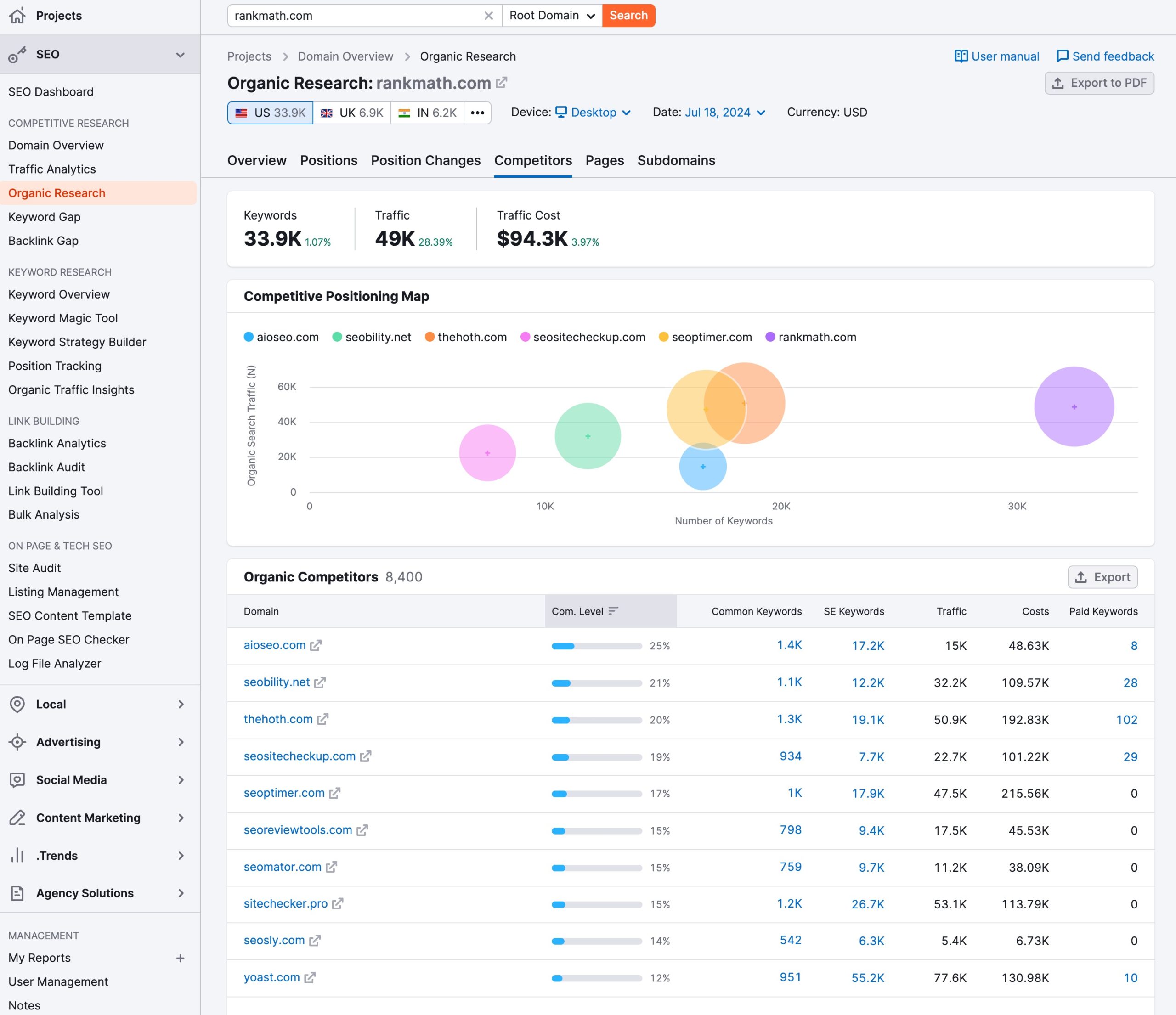
Once you’ve got your list, dig deeper:
- Check their keywords – See which keywords they’re ranking for, how they’re using them in their content, and where you could target high-potential keywords they’ve missed.
- Evaluate their SEO practices – Look at on-page elements like headings, meta descriptions, and internal linking.
- Study their promotion tactics – Notice where they share their content, social media, newsletters, influencer partnerships, and consider how you can use similar or improved strategies to reach your audience.
4.3 Create and Optimize Content
Once you’ve set your goals, it’s time to roll up your sleeves and create content that’s not only engaging but also easy to monitor and improve.
Start by getting crystal clear on your audience and their needs. Research their biggest questions, challenges, and interests. Tools like Google Trends, social media insights, and industry reports can help you spot trending topics and common pain points. When you know exactly what they care about, you can create content that speaks directly to them.

Next, weave in keyword optimization from the start. Identify relevant keywords and place them naturally in your title, headings, meta description, and first few paragraphs. With Rank Math’s research feature, you can instantly analyze a keyword and see valuable data inside the Content AI panel, helping you make smart choices fast.
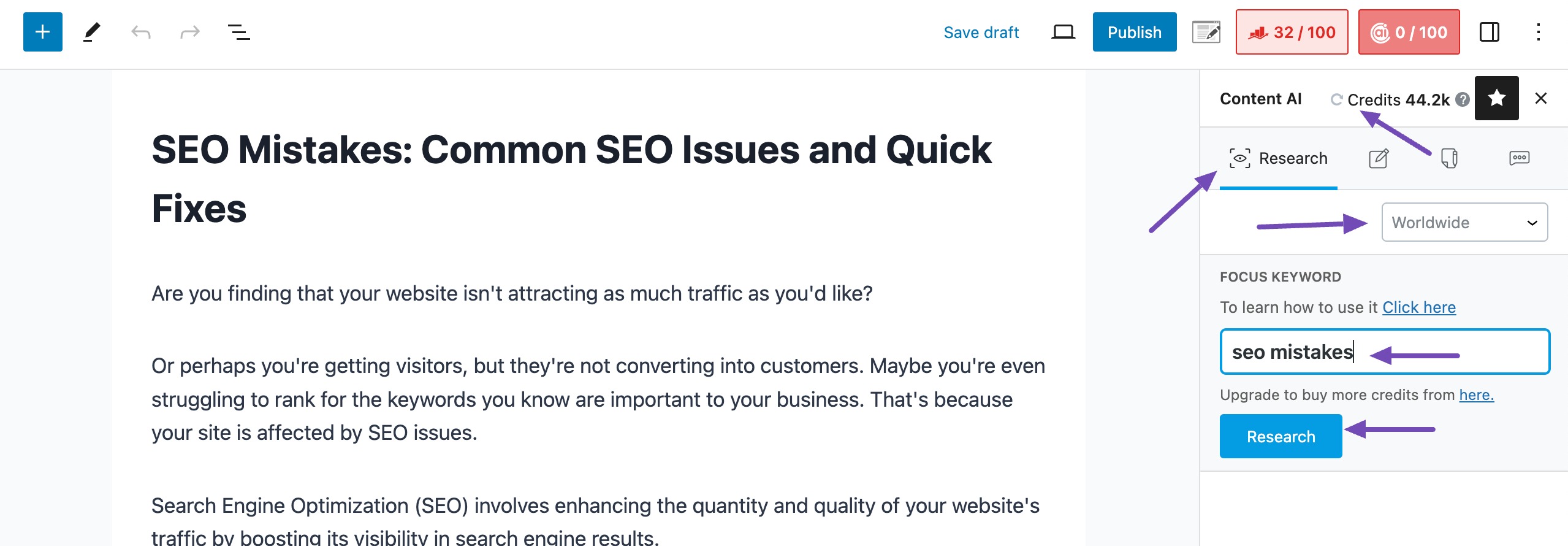
Keep your content structure clear and easy to skim. Use short paragraphs, bullet points, and numbered lists. Break things up with headings and subheadings so readers can quickly find what they need. Don’t forget visuals; images, infographics, and videos can turn a wall of text into something far more engaging.

Content creation isn’t a one-and-done task; it’s an ongoing process. Use the insights from your content monitoring to update your work regularly. Add new information, optimize for fresh keywords, improve readability, or enhance your visuals. Every update keeps your content relevant, useful, and performing at its best.
4.4 Respond Promptly and Appropriately
When someone takes the time to give you feedback, your response can make all the difference in how they feel about your brand.
If it’s positive feedback, acknowledge it right away with a heartfelt “thank you.” Mention something specific from their comment so they know you truly read and valued it. For example, instead of just saying, “Thanks for your kind words,” you can say, “I’m so glad you found our tutorial on content optimization helpful, it means a lot to us!”
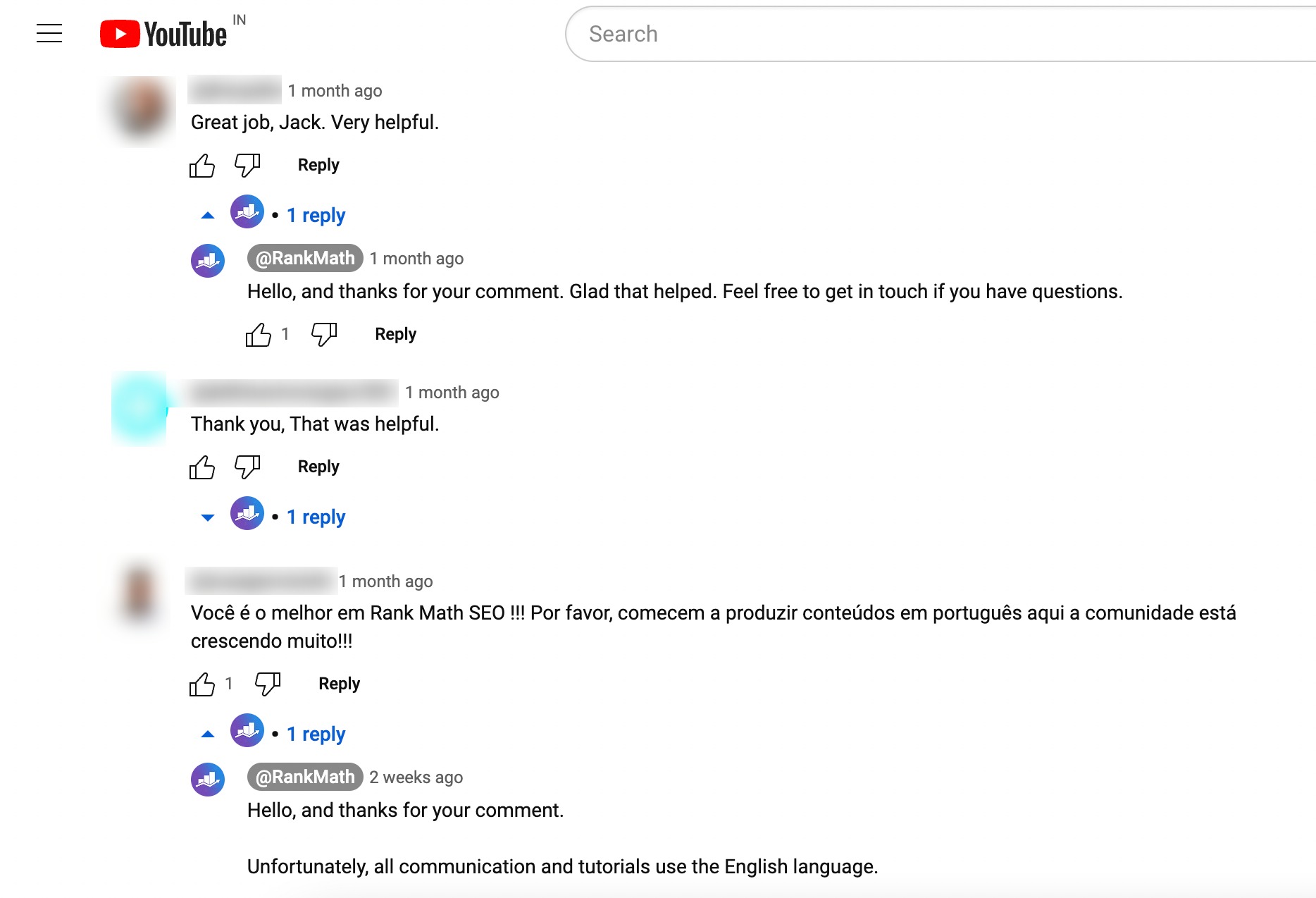
If it’s constructive or negative feedback, respond calmly and respectfully. Address their concerns directly, offer solutions, and show that you’re committed to improving. Even a dissatisfied customer can become a loyal one if they feel heard and respected.
Whenever possible, invite the audience to keep engaging with you, whether that’s by following your social media, joining your newsletter, or checking out your latest updates.
Responding quickly and thoughtfully shows your audience that you value their voice, and it helps build lasting trust.
5 Frequently Asked Questions
What should you monitor when tracking content performance?
You should monitor keyword rankings, organic traffic, click-through rate (CTR), engagement metrics, backlinks, and content freshness.
How often should content be monitored?
Important pages should be monitored regularly (weekly or monthly), while evergreen or low-priority content can be reviewed quarterly.
Can content monitoring help with content updates?
Yes. Monitoring highlights pages that are losing traffic or rankings, helping you decide which content needs updates, expansion, or optimization.
What is content decay, and how does monitoring help?
Content decay happens when rankings or traffic decline over time. Content monitoring helps detect decay early so you can refresh and re-optimize pages.
6 Conclusion
Content monitoring is an ongoing commitment to keeping your content relevant, effective, and aligned with your audience’s needs. By regularly tracking performance, analyzing competitors, responding to feedback, and adjusting your strategy, you give yourself the power to stay ahead in the competition.
Remember, the goal isn’t simply to watch your content, it’s to learn from it, improve it, and make it work harder for you. The more proactive you are, the more control you have over your brand’s growth and reputation.
So, take the insights you’ve gained from this guide and start putting them into action today. Your audience is paying attention; make sure you are too.
If you like this post, let us know by tweeting @rankmathseo.
